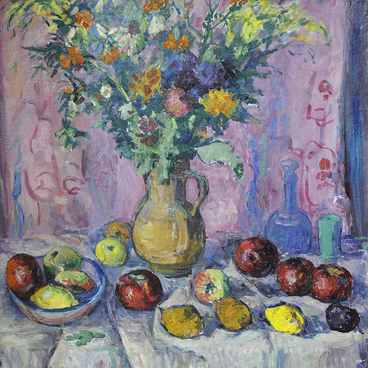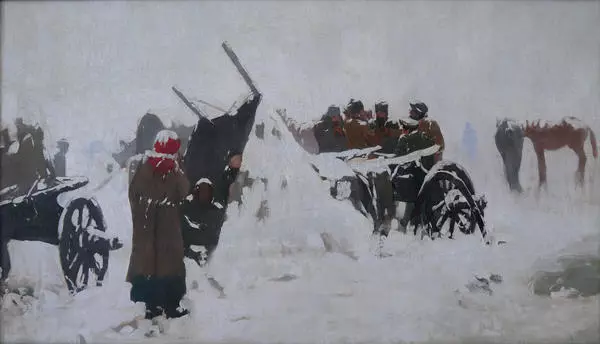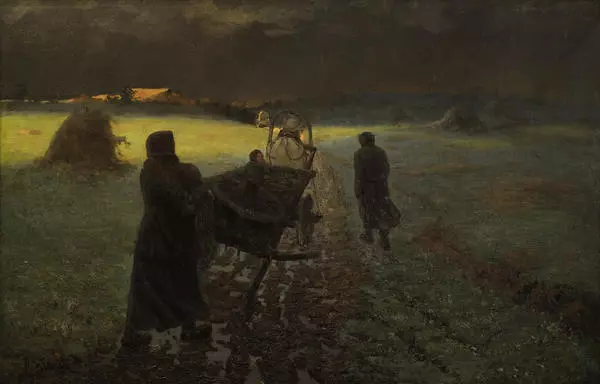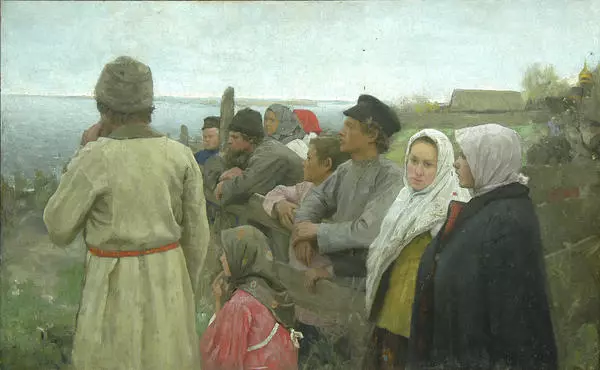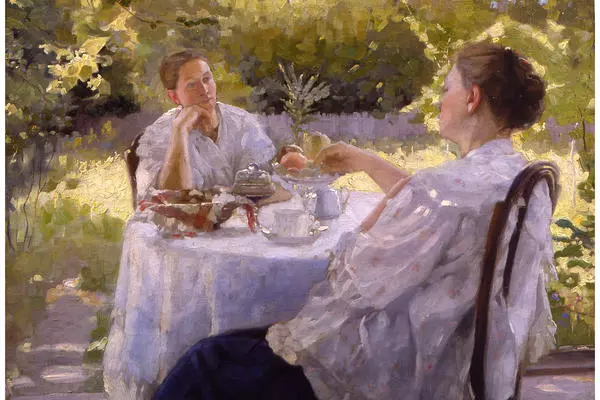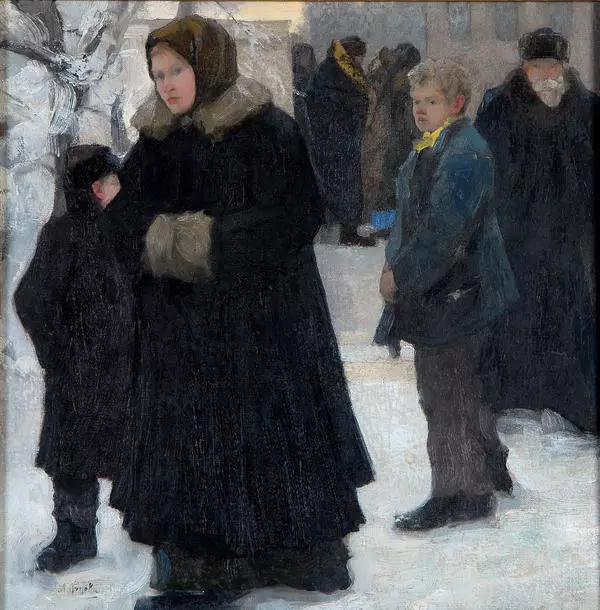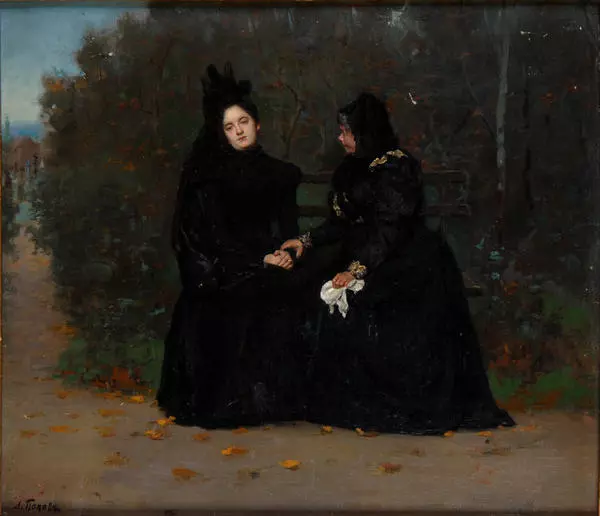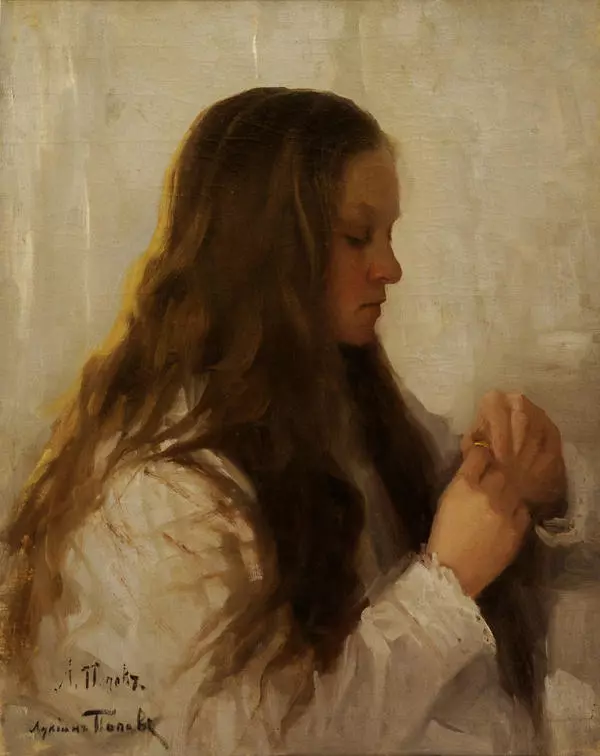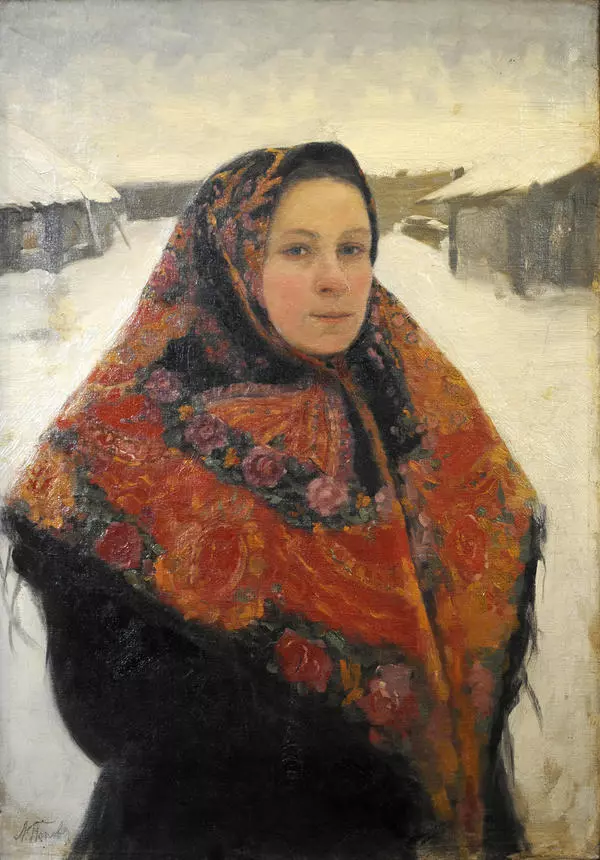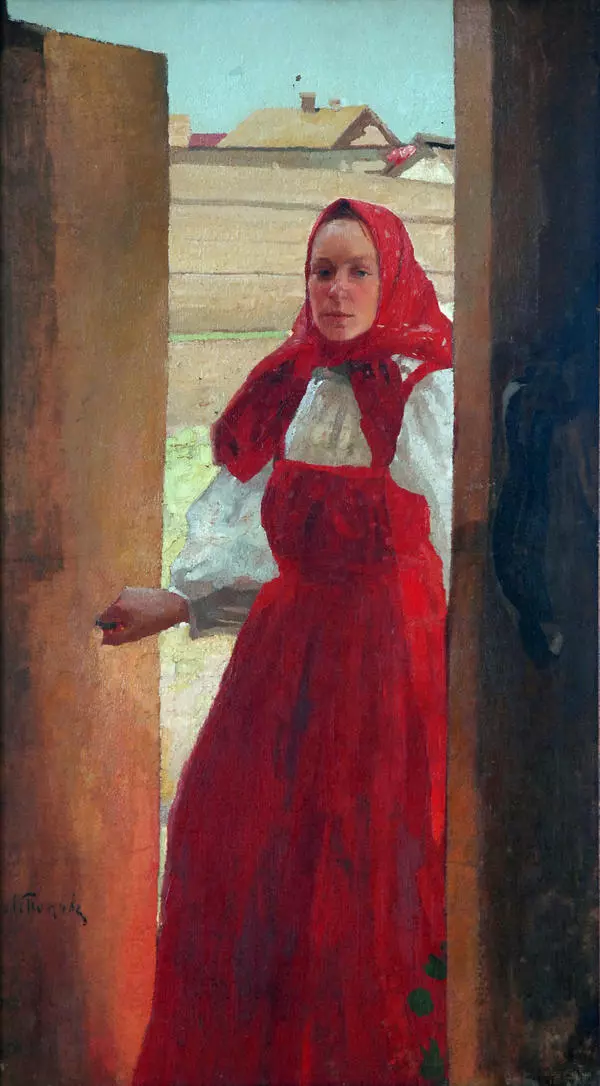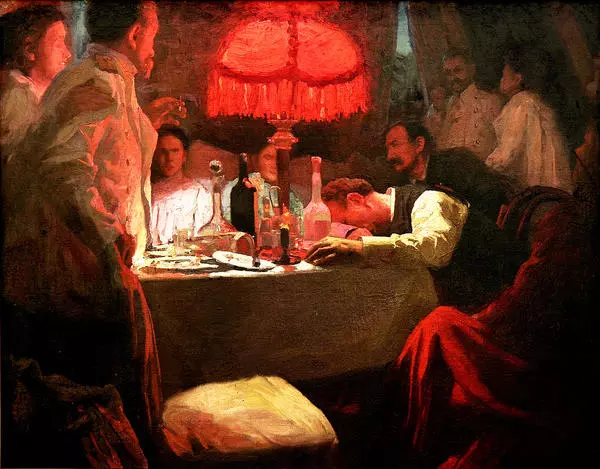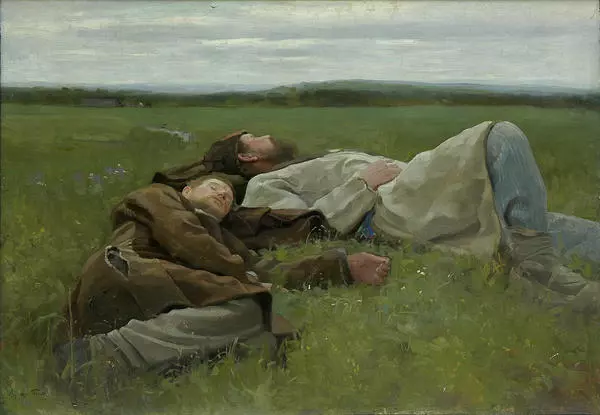After graduating from the St. Petersburg Academy of Arts, Russian realist painter Lukian Popov got the opportunity to travel to Europe. The Academy paid for such trips, so that young artists could study foreign art. In 1902 to 1903, the artist got acquainted with the works of old masters in the museums of Dresden, Munich, Berlin and Paris. As early as in his student years, taking classes from Vladimir Makovsky, Lukian Popov began to study the light in painting. In the 1900’s, Popov created many works featuring various light sources. Woman with a Lamp is one of the paintings of that period.
Woman with a Green Lamp
Время создания
1900’s
Размер
56x45 cm
Техника
Canvas, oil
Выставка
2
Открыть в приложении#3
Woman with a Green Lamp
#2
#6
The lit kerosene lamp with a green glass lampshade has become the visual center of the composition. The artist’s wife Vera Popova, a peasant from Voronezh province, is depicted in twilight; soft glow sets off her pensive and slightly sad face. By this dim light, the artist tried to convey a state of peace, comfort, and immersion in thoughts.
Many things in this picture point at the years of its creation. Popova is dressed in the fashion of the early twentieth century: she is wearing a black dress with frills and a stand-up collar decorated with gold embroidery. The sleeves of the dress are voluminous and lush at the shoulders, but tapering at the wrist to emphasize the grace of the hands.
Many things in this picture point at the years of its creation. Popova is dressed in the fashion of the early twentieth century: she is wearing a black dress with frills and a stand-up collar decorated with gold embroidery. The sleeves of the dress are voluminous and lush at the shoulders, but tapering at the wrist to emphasize the grace of the hands.
Lampshades became one of the symbols of the Art Nouveau era; in the late 19th to early 20th centuries, they were very popular in Russia. Even the composition of the picture itself reflects the spirit of its time: it is fragmentary, and the heroine’s hand is neatly “cut off”.
Popov often painted his wife wearing folk dresses rather than dressed to urban fashion. In this way she is depicted in the Portrait of the Wife in a Colorful Shawl, and Portrait of the Wife in a Red Sundress; rural motifs are evident in the Woman with a Ring. Also, Vera Popova is often featured in the artist’s genre works as a secondary character. For instance, it is her playing the piano in The Bridegroom, and standing in the foreground in the Meadows Flooded.
#7
1. Portrait of the Wife in a Colorful Shawl, 1901 to 1904. 2. Lukian Popov. Portrait of the Wife in a Red Sundress, 1908. 3. Woman with a Ring, 1900’s
#8
Also, Vera Popova is often featured in the artist’s genre works as a secondary character. For instance, it is her playing the piano in The Bridegroom, and standing in the foreground in the Meadows Flooded.
#9
The groom
#10
Popov polished his technique of depicting light until the end of his life. In the 1910’s, he completed one of his main paintings where this technique was used, In Red Light. By means of a lamp with an ominous scarlet lampshade (also very popular in those years), the artist not only set the mood, but also concealed the political plot from censorship. A friendly meeting that has stretched on till morning is actually an opposition congregation. Such meetings, of course, illegal, were not uncommon after the Russian Revolution of 1905.
#11
Under the Red Light
#12
Orenburg Regional Museum of Fine Arts
читать дальшескрыть
00:00
00:00
1x
Woman with a Green Lamp
Время создания
1900’s
Размер
56x45 cm
Техника
Canvas, oil
Выставка
2
Открыть в приложении
Поделиться

